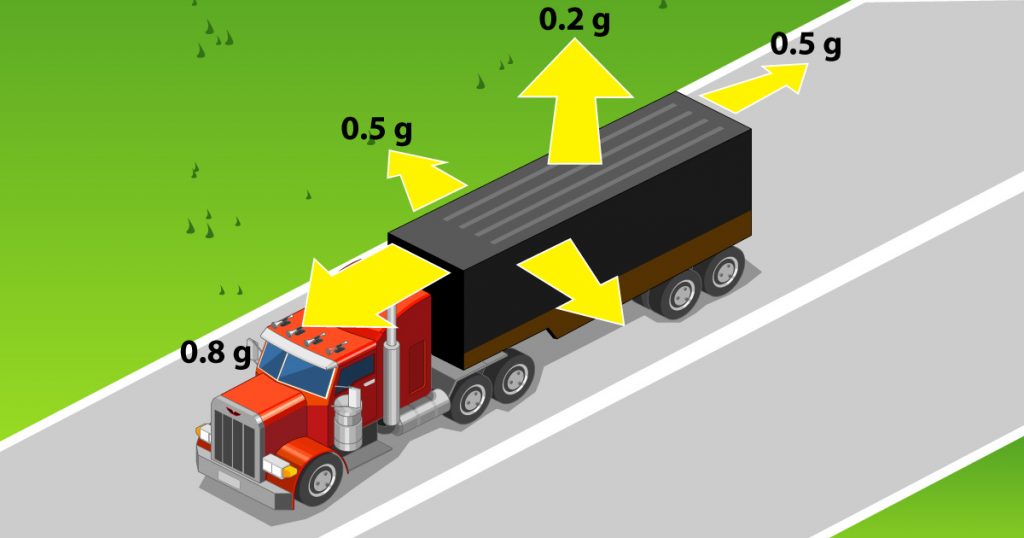Know How to Properly Secure Your Truck Cargo: Here’s How!
by Mario Tarradell | August 14, 2017

Know How to Properly Secure Your Truck Cargo: Here’s How!
Ever found yourself behind a truck in the middle of a fast-paced, packed highway and you notice the truck’s cargo looks like it could be insecure? Think about it for a moment: An 80,000-pound truck loses its load in the middle of a busy highway. Scary.
That’s exactly why the Federal Motor Carrier Safety Administration (FMCSA) introduced cargo securement standards for every commercial motor vehicle. The FMCSA has plenty of rules on how to properly secure truck cargo. And it begins with this very general mandate from their website:
Cargo must be firmly immobilized or secured on or within a vehicle by structures of adequate strength, dunnage (loose materials used to support and protect cargo) or dunnage bags (inflatable bags intended to fill space between articles of cargo or between cargo and the wall of the vehicle), shoring bars, tiedowns or a combination of these.
Also, the FMCSA advises, that if your cargo is likely to roll it must be securely restrained by chocks, wedges, a cradle or other equivalent means to prevent rolling. And if you place cargo beside each other, tie it down strongly so that there’s no shifting and knocking.
Cargo Must Withstand Forces
In other words, your cargo needs to be able to take the twists and turns of your vehicle and stay put. Picture your big rig in the middle of a hurricane. Your truck may never actually be in the middle of a hurricane, but that important cargo needs to be able to withstand these forces:
- Forward Force: 0.8 g (gravity) deceleration in the forward direction. This is force from braking when driving straight ahead.
- Rearward Force: 0.5 g acceleration in the rear direction. This is force from acceleration, shifting gears or braking in reverse.
- Sideways Force: 0.5 g acceleration in the lateral direction: This is force applied when turning, changing lanes or braking while turning
- Upward Force: 0.2 g acceleration in the upward direction: This is force applied when going over bumps in the road or cresting a hill.
Save Money at the Pump
TransConnect Services (TCS) fuel card clients understand the value of saving cash at the pumps. So properly securing truck cargo is even more important, because having to continuously stop to re-secure cargo – or worse, pick up littered cargo – means fuel money down the asphalt drain.
What tools should you be using to secure that cargo? It’s always going to depend on your freight, naturally, but there are rules of thumb. You can use any combination of these load securement devices below:
- Dunnage: Loose materials used to support and protect cargo, like pieces of wood or matting.
- Dunnage bags: Also called inflatable bags, dunnage bags are used to fill space and secure cargo.
- Tiedowns: Ropes, cords, straps or chains are all examples of tiedowns.
- Chocks and wedges: For hauling cargo likely to roll; these wedges or blocks keep it stationary.
Tie Down Requirements
Speaking of tiedowns, when using them always check that they are super secure before you hit the highway. Edge protection to keep the tiedowns from rubbing or cutting your cargo is extra vigilant. In fact, the FMCSA requires tiedowns and other cargo security items to be located inboard of the rub rails, if possible. Like everything else, there are requirements on how to tie down heavy equipment depending on your cargo and weight:
- 5 feet long or less and 1,100 pounds or less = 1 tiedown
- 5 feet long or less and more than 1,100 pounds = 2 tiedowns
- Greater than 5 feet long, but less than 10 feet = 2 tiedowns
- Greater than 10 feet = 2 tiedowns, with 1 additional tiedown for every additional 10 feet
Special Purpose Vehicle Requirements
Then we have special purpose vehicles. If you haul irregularly shaped cargo like steel or concrete beams, crane booms, girders, or trusses, you’ll need to follow the specific guidelines for your type of cargo. You can find detailed information on specific requirements on the FMCSA website as it pertains to these types of special cargo:
- Logs and dressed lumber
- Metal coils
- Paper rolls
- Concrete pipe
- Intermodal containers
- Automobiles
- Light trucks and vans
- Heavy vehicles/equipment/machinery
- Flattened/crushed vehicles
- Roll-on/roll-off containers
- Large boulders
When you follow proper cargo securement standards, not only do you remain compliant and safety-conscious, but you keep your load secure, which in turn makes you trustworthy for more hauls. Your vehicle burns less fuel and you help prevent unnecessary accidents. Cargo accidents are prevented when truck balance is maintained to avoid tip-overs, loss of control and other problems. But when cargo is loose, sliding, unbalanced, then accidents are likely.
Even worse, poorly secured cargo could push through the rear doors of the trailer to splatter onto the roadway. That’s a nightmare for everybody – the trucker, the shipper, and the surrounding drivers who didn’t see it coming. Be doubly sure there are no cuts, cracks or other signs of weakness in your equipment – from tiedowns to truck bed. Make sure you reach your destination safely.
Properly secure your truck cargo and save on fuel. Apply for a TransConnect Services Fuel Card today and enjoy discounts at TA, Petro, Ambest, Speedway, Sapp Bros., and many more. Call us today at 844-827-7705.
